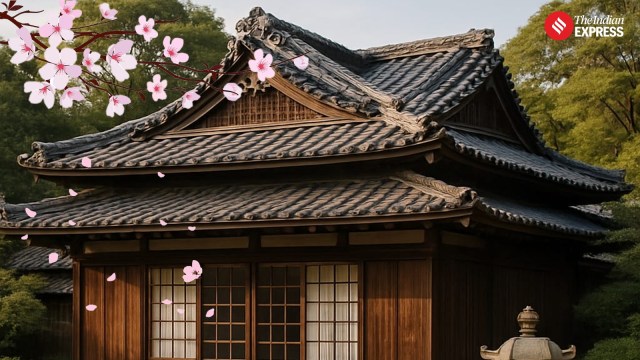📣 For more lifestyle news, click here to join our WhatsApp Channel and also follow us on Instagram
5 ways you can create a Japanese-style minimal home
If you’ve ever walked into a Japanese-style home and wondered why it feels so restful, it’s the intention behind it. These five time-honoured principles can gently guide you toward a minimalist space that supports calm, clarity, and connection
 Discover how to create a Japanese-style minimalist home using 5 powerful principles (Image created by Perplexity)
Discover how to create a Japanese-style minimalist home using 5 powerful principles (Image created by Perplexity)Keeping a peaceful, clutter-free home doesn’t come naturally to most of us. But in Japan, simplicity is more a way of living than just an aesthetic. Even the smallest spaces feel open, organised, and calming in Japanese homes.
If you’ve ever walked into a Japanese-style home and wondered why it feels so restful, it’s the intention behind it. These five time-honoured principles can gently guide you toward a minimalist space that supports calm, clarity, and connection.
Let’s walk through each one and see how they can transform not just your home, but also how you live in it.
1. Everything has its place
The first rule is deceptively simple: every object should have a home of its own.
Where do your keys go when you arrive home? Now imagine a small dish near your entrance. It’s not about strict organisation. It’s about kindness. You shouldn’t have to search for everyday things. When your keys, your mail, or your chargers live in the same place, it’s as if your home is looking after you.
Start with three items you use daily: give each one a proper, designated spot. You’ll be surprised how this tiny habit softens the day.
2. Honour empty space (Ma)
In Japanese aesthetics, there’s a beautiful concept called ma, the space between things. Think of the silence between notes in music; without the pauses, there’s no melody.
A shelf might have just one vase. A table might have just one plant. The rest is space to breathe.
Japanese minimalism doesn’t chase emptiness; it embraces presence. Empty space isn’t a lack of decoration; it’s a conscious pause. It invites your mind to rest.
Try this: pick one surface, a shelf, a table, a counter, and leave 30% to 50% of it empty. Watch how your attention and breathing change every time you look at it.
 Where do your keys go when you arrive home? Now imagine a small dish near your entrance. (file)
Where do your keys go when you arrive home? Now imagine a small dish near your entrance. (file)
3. Cleaning as a daily ritual
Cleaning in Japan is less of a weekend burden and more of a daily rhythm. It’s almost meditative.
You’re not scrubbing because your home is dirty. You’re caring for it, like watering a plant, not out of necessity, but out of love. It’s a dialogue between you and the space that holds you.
Next time you wipe a counter or fold a towel, slow down. Turn it into a mindful pause. It doesn’t have to be perfect, just intentional.
4. Less furniture, more flow
Japanese interiors often use low furniture, sliding doors, and multipurpose items. The idea? Let your space flow with life.
Imagine your living room as a river. Furniture pieces are the stones. If there are too many stones, the water can’t flow. Ask yourself: is there any furniture you walk around awkwardly every day? If something blocks your path or clutters your mind, maybe it’s time to let it go, or move it.
Minimalism in Japan isn’t about having less for the sake of it. It’s about allowing space to move, breathe, and support your daily life.
5. Embrace seasonal rotation
Nature is always shifting, and Japanese homes reflect that. You won’t find the same decor up all year round.
It’s like changing clothes. You don’t wear a coat in the heat. Your home can adapt too. Lighter bedding in summer, cosy textures in winter. Maybe a few dry leaves in fall, or fresh flowers in spring. It doesn’t need to cost anything. A small basket can hold objects that rotate with the seasons.
This gentle shift keeps your space feeling new without adding clutter.
Ultimately, true minimalism isn’t about perfection. It’s about the peace you feel when you walk into a room and know you’ve found your place in the world.
Which rule will you start with?
📣 For more lifestyle news, click here to join our WhatsApp Channel and also follow us on Instagram
- 01
- 02
- 03
- 04
- 05


























